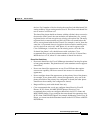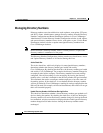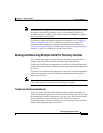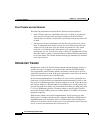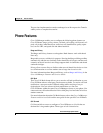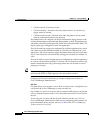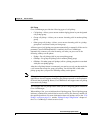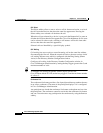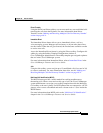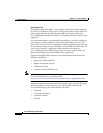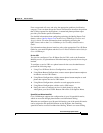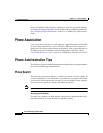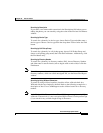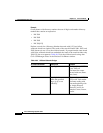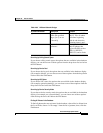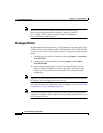
40-37
Cisco CallManager System Guide
OL-7135-01
Chapter 40 Cisco IP Phones
Phone Features
Direct Transfer
Using the DirTrfr and Select softkeys, a user can transfer any two established calls
removing the calls from the IP phone. For more information about Direct
Transfer, see the “Making and Receiving Multiple Calls Per Directory Number”
section on page 40-31.
Immediate Divert
The Immediate Divert feature allows you to immediately divert a call to a
voice-messaging system. Managers and assistants, or anyone who shares lines,
use this feature. When the call gets diverted, the line becomes available to make
or receive new calls.
Access the Immediate Divert feature by using the iDivert softkey. Configure this
softkey by using the Softkey Template Configuration window of
Cisco CallManager Administration. The softkey template gets assigned to phones
that are in the Cisco CallManager system.
For more information about Immediate Divert, refer to Immediate Divert in the
Cisco CallManager Features and Services Guide.
Join
Using the Join softkey, a user can join up to 15 established calls (for a total of 16)
to create a conference. For more information about Join, see the “Making and
Receiving Multiple Calls Per Directory Number” section on page 40-31.
Malicious Call Identification (MCID)
The MCID feature provides a useful method for tracking troublesome or
threatening calls. When a user receives this type of call, the Cisco CallManager
system administrator can assign a new softkey template that adds the Malicious
Call softkey to the user’s phone. For POTS phones that are connected to a SCCP
gateway, users can use a hookflash and enter a feature code of *39 to invoke the
MCID feature.
For more information about MCID, refer to the “Malicious Call Identification”
chapter in the Cisco CallManager Features and Services Guide.



